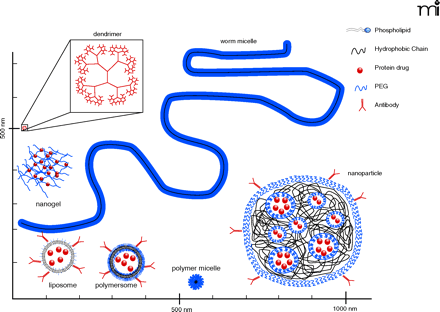
- Institution: Stanford Univ Med Ctr Lane Med Lib/Periodical Dept/Rm L109
- Sign In as Member / Individual
Advanced Drug Delivery Systems That Target The Vascular Endothelium

Nanocarriers for vascular drug delivery. Schematic representation of several main types of nanocarriers depicted in relative size scale with limited and oversimplified structural features. All nanocarriers can be surface-conjugated with targeting antibodies (or alternative affinity moieties) and PEG polymer providing stealth features. Dendrimers are the smallest of nanocarriers, in the maximum range of tens of nanometers. They possess multiple end groups suitable for high extent of coupling targeting or active agents. Liposomes, composed of biologically derived phospholipids, are the most common form of nanocar-riers with large aqueous loading potential, yet are also the least stable of carriers. Polymersomes, one of three self-assembled polymeric nanocarriers, are the synthetic polymer analog of liposomes, possessing enhanced stability, dense PEG coating, and therefore prolonged circulation in vivo. Worm micelles are long, flexible cylindrical polymer micelles which possess one of the longest circulation times recorded in vivo. Polymeric micelles are the smallest of the self-assembling polymer aggregate carriers and are the least stable self-assembler. Nanogels are composed of cross-linked polymers with drug entrapped into the ensuing matrix. Their circulation and potential therapeutic uses still remain to be studied. Nanoparticles are solid polymer structures formed through processing rather than self-assembly methods. They represent the largest of the carriers, have the greatest active protein loading capacity measured to date, and are able to protect encapsulated therapeutic enzymes from external proteolysis.


